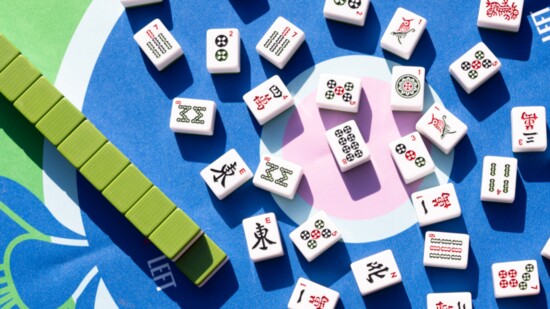Mahjong is the most popular pastime in the world, but it’s not played the same everywhere. In fact, it’s been adapted over and over to suit different groups and cultures for centuries. Mahjong dates to the mid 1800s in China during the Qing Dynasty. The history is referenced in the 144 game pieces; tiles depict “bams” (for bamboo), “cracks” (for Chinese characters), "dots" for coins and others, like dragons and flowers and winds that some believe date back to Confucius.
It plays like a mix of gin rummy and Rummikub with tiles and suits and die and multiple variations. Different versions add or subtract tiles, alter scoring and rules, all helping to explain the broad appeal of the four-player parlor game based on chance and skill.
The word “mahjong” means “sparrow” in some Chinese dialects which refers to the bird-like clicking sound the tiles make during a shuffle. And the rhythms of the game are particularly suited to conversation and comraderie, similar to Bridge. The shuffle and deal are the hardest part of the game, involving multiple steps and moves like building walls, “curtsies,” a Charleston and “cupcakes.” Once the basics of the deal are mastered, the learning curve is quick, and novices fall for the clatter of mixing tiles and the smooth, cool weight of each one.
The game was introduced in the United States in the 1920s and was made popular among military wives. It has grown enormously in popularity with an American twist. The National Mah Jongg League based in New York established in 1937 drafted the rules for “American Mahjong” and now boasts 350,000 members. The rules dictate a “standard of hands” or “lines” which change annually. A new card with new lines is available each year.
The Memphis Mahjong Club was established in January 2024 by a group of friends who each had a unique history with Mahjong and organized to promote the game and build a community of players in the River City. They offer private and group lessons, teaching the National Mah Jongg League rules, in a variety of settings, homes, clubs, parks, poolside and charity events. Most recently, they helped organize a fundraiser for ArtsMemphis with 60 tables of players and raised $25,000.
Lindsay Adams, Colleen Canale, JJ Keras and Jennifer Hobson are the collaborative team behind the Memphis Mahjong Club. “It’s a kind of social entrepreneurship,” says Keras who saw the need for a Memphis Club once she began researching other Southern cities’ clubs. “It’s really filled a void in the Memphis Mahjong community,” says Keras. It’s an intellectual game but also social, providing a unique opportunity to meet new people and an escape for a few hours.
Besides the social component, different Mahjong pieces and die and accessories, like those from The Mahjong Line out of Dallas, keep the enthusiasm fresh and fun. With any of the newer sets, players really must work to interpret the images and form hands which is part of the unique challenge. Changes have been going on since the earliest origins of the game, and hopefully tweaks and reinterpretations will continue to grow the enthusiasm and the Memphis community. Just one “Mahjong” – as the winning player gets to say – will get you hooked.
“It’s a kind of social entrepreneurship,” says JJ Keras.
Just one “Mahjong” will get you hooked.
